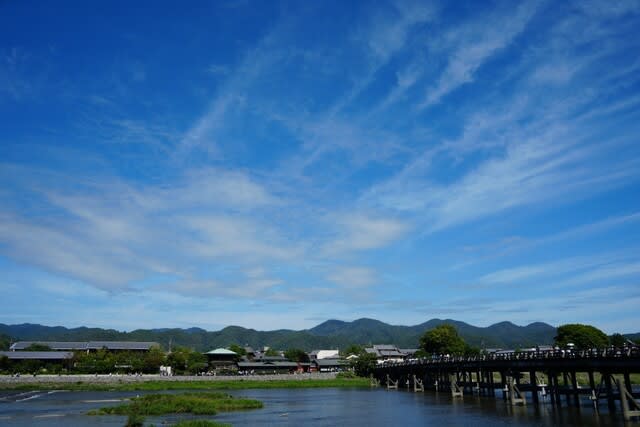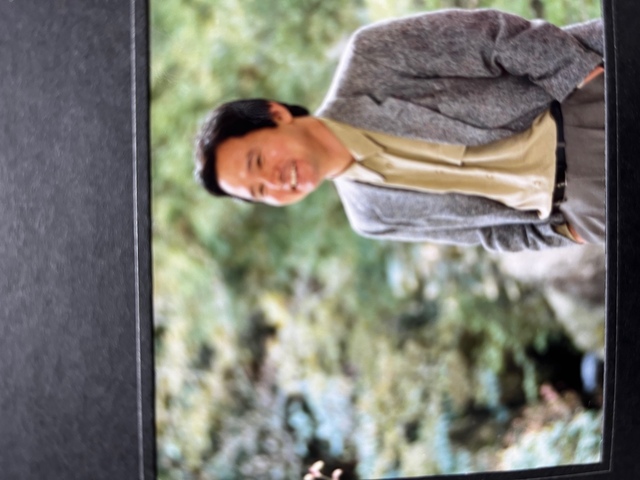The following is from a feature article in the February issue of "Sound Arguments," a monthly magazine now on sale, titled "Exposing the Comfort Women Lies: Experts' Voices from South Korea.
It is a must-read not only for Japanese citizens but also for people around the world.
The emphasis in the text other than the headline is mine.
At the "Japan-Korea Joint Symposium on the Comfort Women Issue" held in Tokyo on November 16, 2022 (sponsored by the International Institute for Historical Review), some Korean participants criticized South Korean claims regarding comfort women.
The following is a detailed report on the content of the speeches.
It is a must-read not only for Japanese citizens but also for people around the world.
The emphasis in the text other than the headline is mine.
At the "Japan-Korea Joint Symposium on the Comfort Women Issue" held in Tokyo on November 16, 2022 (sponsored by the International Institute for Historical Review), some Korean participants criticized South Korean claims regarding comfort women.
The following is a detailed report on the content of the speeches.
Byung-Hun Kim, Director of the Korean Institute of National History Textbooks; Bak Soon Jong, journalist; and Ryu Seok-Chun, former professor at Yonsei University
Bak Soon Jong
The Identity of "Anti-Japanese Action" - The Shadow of North Korea Behind it
There is a student group in South Korea called "Anti-Japan Action," and I would like to discuss with you today the comfort women issue and its relationship with North Korea, focusing on this group.
I used to work as a reporter for the South Korean internet media outlet Pen and Mike, covering mainly social and international news.
In December 2019, I covered the press conference of Dr. Lee Eu-Young, whom you all know, against the Wednesday protests, which triggered my interest in the so-called "comfort women" issue, and I have been pursuing the subject ever since.
In December 2015, the "Japan-Korea Comfort Women Agreement," which you are all familiar with, was signed, including a promise to promptly remove the "comfort women" statue in Jongno-gu, Seoul, in violation of the "Vienna Convention on Diplomatic Relations.
Soon after the agreement was announced, a group of university students calling themselves "Defenders of the Statue of the Young Girls" set up tents around the statue and began to stand in opposition to the removal of the statue.
This group is called "Anti-Japanese Action," which I would like to introduce to you today.
Incidentally, the name "Anti-Japan Action" was changed after the late former Prime Minister Shinzo Abe stepped down in September 2020 due to illness. Before that, it was called "Anti-Abe Anti-Japan Youth Student Action.
The group became widely known in South Korea after more than a dozen people involved in the group holed themselves up in comfort women statue in the early morning hours of June 23, 2020, and tied themselves to it.
Why did they do it?
As you may remember, in May 2020, Lee Yong-soo, claiming that she was forced to become a "comfort woman," held two press conferences to expose the alleged fraud of "Solidarity in Memory of Justice," a support group for comfort women.
It led the conservative group "Freedom and Solidarity" to submit a notice of rally in front of the comfort women statue before "Solidarity and Memory of Justice" while demanding the arrest of Yoon Mee-Hyang, a member of the National Assembly who is the former president of "Solidarity and Memory of Justice.
According to South Korea's "Act on Gatherings and Demonstrations," when the time and place of gatherings conflict with other organizations, the party that has submitted the notification first has the right to hold the meeting.
When they could no longer legally rally in front of the statue of the comfort women, a dozen members of the student group I am introducing to you today began to "siege" the sculpture by tying themselves to it with ropes and other objects.
The siege continued until July 3 of the same year, when the Jongno-gu district of Seoul issued an administrative order banning the gathering around the statue under the pretext of quarantine measures against the new coronavirus.
Activists of the "followers of the North
Let us look at media articles from that time.
The Yonhap News, a state-run news agency, reported under the headline, "Over a dozen university students sit in with their bodies tied to the statue of a young girl."
Did a group of university students with a pure sense of justice really join forces to resist an unjust and satanic conservative group?
As I researched the identities of the university students sitting around the statue, it became clear that many were actually members of a particular political party.
That particular party is the "People's Democratic Party.
I want to give an overview of the information on the political party of the Democratic Party of the People, which is publicly available on the Internet.
The predecessor of the Democratic Party of the People is an organization called "Korea Solidarity for Independent Unity and Democracy.
I will describe this predecessor organization later.
The founding of the Democratic Party of the People's Republic of Korea was on November 21, 2016, just after the conviction of three high-ranking officials of Korea Solidarity by the Grand Court (Supreme Court).
The party's leader is Lee Sang-hoon, who the Supreme Court convicted of violating the National Security Law.
The party's ideological foundation is the "Juche," the so-called "subjugation of the North.
Therefore, the party's activities are mainly focused on the campaign for the withdrawal of U.S. forces from Korea.
Relevant organizations include the party newspaper "Min" and "Locomotive of Strife," and the online newspapers "21European University News," "21st Century Nationalities Daily," "Police Reform News," and "Anti-Japanese News.
As for the "Korea Solidarity" mentioned earlier, the Grand Court confirmed in October 2016 that it is Korea's transfer organization under the National Security Law.
This "Korea's transfer organization" is, according to Korean precedent, "a continuous, independent, continuous organization formed by a specific number of persons to praise, inspire, or promote the activities of anti-state organizations (referring to North Korea) or others, or to sympathize with them or promote or inciting national upheaval, and is a The term "solidarity" refers to a "continuous and independent association formed by a specific number of people to propagate and inspiring activities or sympathize with such activities or promoting and inciting national upheaval.
The three people indicted in the Korea Solidarity case were Yang Koeun and Cho Duk-won, co-chairmen of the organization, and Lee Sang-hoon, director of the Korea Institute for the 21st Century.
The three were indicted on suspicion of constituting Korea's transfer organization, praising, inspiring, and promoting North Korean activities, as well as sending Hwang Ferro to the North when North Korean leader Kim Jong-il died in 2011.
Of the three, Cho Duk-won is known for his involvement in the so-called "Central Regional Party (National Liberation Patriotic Front) Incident" in 1992.
Under the direction of Ri Song-sil, a spy from the North, the incident involved the following activities:
- Organizing blue- and white-collar workers in factories into an armed group
- Infiltrating the academy, labor, speech, and cultural circles
- Receiving orders from North Korea and reporting the situation to North Korea
- Producing pamphlets praising Kim Il-sung, Kim Jong-il, and their father and son
The "Korea Peace Media Center" is the most significant public security incident since the founding of South Korea, with 62 people arrested by South Korea's counterintelligence agency.
The successor organization to "Korea Solidarity," which caused this incident, is the People's Democratic Party.
Its members are involved in the campaign to prevent the removal of the comfort women statue.
The year after Kanemaru's delegation visited North Korea, ignited
Let us now change the topic and consider the genesis of the "comfort women" issue.
As you all know, the testimony of the late Kim Gak-soon on August 14, 1991, triggered the so-called "comfort women" issue to become a full-fledged diplomatic issue between Japan and South Korea.
Takashi Uemura, a reporter for the Asahi Shimbun newspaper, reported Kim's testimony in Japan.
The year 1991 is very significant in terms of time.
One year earlier, in September 1990, a Japanese delegation, including Makoto Kanemaru of the Liberal Democratic Party and Makoto Tanabe of the Socialist Party, visited Pyongyang, North Korea, carrying a letter of condolence from then Prime Minister Toshiki Kaifu.
From the Workers' Party of Korea (WPK), Secretary Kim Yong Sun, who was in charge of the country's efforts against South Korea, made an appearance, and discussions on the normalization of diplomatic relations between Japan and North Korea began with a joint declaration by the three parties.
In light of the international political relations at the time, it is not unreasonable to interpret Kim's testimony as a part of North Korea's efforts to oppress Japan morally and secure a favorable position in the normalization of diplomatic relations between Japan and North Korea.
The husband of Yoon Mee-hyang, a member of the National Assembly who was the president of "Solidarity for Justice and Memory," and his brother and sister Kim Sam-seok, who were convicted of espionage in 1994, are persons who are suspected of being so-called "followers of the North," as I have introduced them to you today.
It is reasonable to infer that North Korea is the one who is leading the "comfort women" issue from the fact that important persons who are or have been deeply involved in the "comfort women" issue, including their "anti-Japan activities," are related to North Korea in some way.
North Korea has not officially given up on the red reunification of the Korean Peninsula.
The two pillars supporting South Korea's security are the United States and Japan.
North Korea's well-known redistribution strategy against South Korea is the "crown-string tactic.
The traditional Korean crown has two strings, one signifying the U.S. and the other signifying Japan.
The crown itself is the "security of Korea."
And if either of the two strings is cut, the crown will be blown away by the wind.
So which is the relatively weaker cord?
Japan, of course.
In Korea, with its colonial experience, ordinary Koreans are educated to have a bad image of Japan.
It means that in history education led by leftist forces, it is an easy maneuver to make people hostile toward Japan by focusing on the bad aspects of the colonial period.
My conclusion is that it is reasonable to understand that today's comfort women issue was also caused to foster a favorable environment in advance of talks on the normalization of diplomatic relations between Japan and North Korea and that it is now serving the function of turning the people of the two countries against each other.
As Mr. Tsutomu Nishioka, in today's audience, pointed out, "The path to the friendship between Japan and South Korea lies based on truth."
When the people of Japan and Korea, especially Koreans, wake up to the truth of the "comfort women" issue, it will be a turning point to sum up the past 100 years of Japan-Korea relations and to welcome the new 100 years.

























